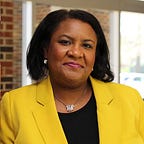You’ve Hired Your Person of Color: Now What?
Many of the Black science, technology, engineering, and mathematics (STEM) professionals who have served as my mentors and colleagues are ascending to positions as deans and presidents.
There’s Dr. Lesia Crumpton-Young, president of Texas Southern University. I’ve known her since I was an industrial engineering graduate student at The University of Alabama. She encouraged me to submit a grant that resulted in my receiving a presidential award for my research from President Obama.
There’s Dr. Brian Blake, the incoming president of Georgia State University. I facilitated a Quality Education for Minorities workshop with him in Baltimore years ago.
There’s Dr. Gilda Barabino, the president of Olin College of Engineering. I first met her when she was a site visitor for an engineering research center when I was a doctoral student at Vanderbilt University in the early 2000s.
These are people who, like me, moved through the ranks of higher education, seeking and acquiring leadership positions.
For almost thirty years, I have wanted to be a university president too. Attending Spelman College did that for me. Hearing Dr. Johnnetta B. Cole say “My Spelman Sisters” in her rich voice as she looked at the sea of Black women in Spelman’s Sisters Chapel during convocation made me want to impact students and create a positive intellectual community too. I wanted that same career path. I wanted to be that person.
Or so I thought.
Becoming a department chair was a natural next step for me on that path to the presidency. Little did I know the challenges I would face and the hurt I would experience along the way.
It wasn’t that I couldn’t do the job. My academic training prepared me for that. It was what happened after I was hired. It was the lack of respect I experienced in my leadership position.
This week, I’ve reflected on the personas that challenged my success. What I know is that people of color and women of color leaders can be harmed in a system even if they are in charge.
The Withholders
These are people who work around and for you who keep information from you. This information is necessary for you to do your job well. They make you have to learn info from scratch. Their actions waste your time and increase the likelihood you won’t succeed.
The Two-faced Allies
Allies are supposed to help, but these people say one thing to you because you are the boss and another thing behind your back. They don’t know which way the culture is moving so they stay in the middle. They can hurt and help at the same time.
The Cliques
They stick together because they are afraid of change or being left out. They become the “mean folks” of your org. They are insecure about their power so they come together to become powerful. They often stir the pot & become bullies and troublemakers in your org.
The Ignorers
They don’t want you to lead. They didn’t want you to be hired. They are in denial about your leadership. They decide they aren’t going to acknowledge you as their leader. They work through someone else to give you information. They won’t give you respect. They are walls that won’t move.
The Equals
These are folks who refuse to acknowledge your positionality. You can be the boss as long as you don’t tell them what to do. You can’t critique their performance because, in their eyes, they are never wrong. Nothing you say about their needing to improve is true regardless of your position, expertise, or evidence. To them, YOU are the problem.
The Don’t Know What’s Going Ons
They don’t know what’s happening in the organization. They are oblivious to the drama because they keep their heads down. They are relatively neutral and don’t know about the inner workings. They usually are great people but they can’t help or hurt the organization as advocates. They do keep things moving as other issues unfold.
The Enablers
These are folks who know how awful people are in the organization. They sit by and don’t correct them because, in their eyes, it’s not their problem. If they spoke up, the culture could change, but they won’t speak up. They let the people of color and women of color take ALL the heat as they benefit from the changes in the organization.
The Aggressors
They challenge everything you do. Your organization could be a great place if they translated their passion into something constructive. No matter how good things are, they have to find fault. It’s second nature to them. They are “bold” as they challenge you on everything. They throw heat but can’t take the heat.
At the end of the day, hiring people of color and women of color shouldn’t be the end of your diversity efforts. The culture is going to oppose their leadership. It’s natural when you bring in firsts or onlies. If people don’t want someone in power, they can manipulate the system. They can still work in ways that hinder that person’s success.
